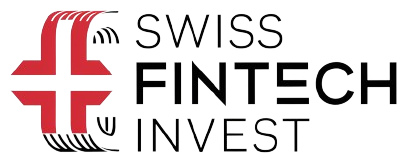Assess Your Financial Situation and Goals
Before investing your $50,000, it’s crucial to take a step back and evaluate your current financial situation and goals. This assessment will help you determine the most appropriate investment strategies aligned with your unique circumstances and objectives.
Begin by considering your overall financial health, including any outstanding debts, emergency fund, and current investments. Prioritize paying off high-interest debt and building an emergency fund to cover 3-6 months of living expenses before allocating funds towards investments.
Determine Your Investment Timeframe
Your investment timeframe is a critical factor in selecting suitable investment options. Short-term goals, such as saving for a down payment on a house or funding a wedding, may require more conservative investments to minimize risk. On the other hand, long-term goals like retirement planning allow for more aggressive investment strategies, as you have more time to ride out market fluctuations.
Consider categorizing your goals into short-term (less than 5 years), medium-term (5-10 years), and long-term (more than 10 years) to help guide your investment decisions.
Evaluate Your Risk Tolerance
Risk tolerance refers to your ability and willingness to withstand potential losses in pursuit of higher returns. As an investor, you may fall into one of three categories:
- Conservative investor: Prioritizes capital preservation and stable, modest returns.
- Moderate investor: Seeks a balance between growth and stability, accepting some risk for potentially higher returns.
- Aggressive investor: Comfortable with higher levels of risk in exchange for the potential for significant returns.
Understanding your risk tolerance will help you select investments that align with your comfort level and prevent you from making emotionally-driven decisions during market volatility.
Identify Your Financial Goals
Clearly defining your financial goals is essential for creating a targeted investment strategy. Common goals may include:
- Retirement savings: Building a nest egg to support your desired lifestyle in retirement.
- College fund: Saving for your children’s or grandchildren’s education expenses.
- House down payment: Accumulating funds to purchase a home or investment property.
- Long-term wealth: Growing your assets to achieve financial independence and create a legacy.
By identifying your specific goals, you can allocate your $50,000 investment across various vehicles that best support your objectives.
Consider Low-Risk Investment Options
For conservative investors or those with short-term goals, low-risk investment options can provide stable returns while preserving capital. These investments may not offer the highest potential returns but can serve as a foundation for your investment portfolio.
Low-risk investment options for your $50,000 include high-yield savings accounts, certificates of deposit (CDs), and government bonds. While returns may be modest, these vehicles can provide peace of mind and liquidity when needed.
High-Yield Savings Accounts and CDs
High-yield savings accounts and CDs are FDIC-insured, meaning your funds are protected up to $250,000 per depositor per bank. These accounts offer guaranteed returns, albeit at relatively low interest rates compared to other investment options.
When considering high-yield savings accounts and CDs, compare interest rates across various financial institutions to ensure you’re getting the best return on your money. Keep in mind that CDs typically require you to lock in your funds for a specific term, which can range from a few months to several years.
Treasury Bills, Notes, and Bonds
Treasury bills, notes, and bonds are government-backed securities issued by the U.S. Department of the Treasury. These investments are considered among the safest, as they carry the full faith and credit of the U.S. government.
- Treasury bills (T-bills): Short-term securities with maturities ranging from a few days to 52 weeks. T-bills are sold at a discount from their face value and do not pay interest before maturity.
- Treasury notes (T-notes): Medium-term securities with maturities of 2, 3, 5, 7, or 10 years. T-notes pay interest every six months and face value at maturity.
- Treasury bonds (T-bonds): Long-term securities with maturities of 20 or 30 years. Like T-notes, T-bonds pay interest every six months and face value at maturity.
While treasury securities offer low default risk, they also tend to provide lower returns compared to other investment options. However, they can serve as a stable foundation for your investment portfolio, particularly if you have a low risk tolerance or short-term investment horizon.
Explore Tax-Advantaged Accounts
Tax-advantaged investment accounts can help you maximize your $50,000 investment by minimizing your tax liability and allowing your money to grow more efficiently over time. These accounts come with specific rules and contribution limits, so it’s essential to understand their benefits and restrictions before investing.
Some popular tax-advantaged accounts include retirement accounts like 401(k)s and IRAs, health savings accounts (HSAs), and college savings plans such as 529 plans.
Max Out Retirement Accounts
Retirement accounts, such as 401(k)s and IRAs, offer tax benefits that can significantly boost your long-term savings.
- 401(k): If your employer offers a 401(k) plan, consider contributing up to the maximum allowed ($19,500 for 2021; $26,000 if you’re 50 or older). Many employers also offer matching contributions, essentially providing free money to invest.
- Traditional IRA: Contributions to a traditional IRA may be tax-deductible, and your investments grow tax-deferred until withdrawal in retirement. For 2021, the contribution limit is $6,000 ($7,000 if you’re 50 or older).
- Roth IRA: While contributions to a Roth IRA are not tax-deductible, your investments grow tax-free, and you can withdraw funds tax-free in retirement. The contribution limits are the same as for traditional IRAs.
By maxing out your retirement accounts, you can take advantage of tax benefits while building a substantial nest egg for your golden years.
Contribute to a Health Savings Account
If you have a high-deductible health plan (HDHP), you may be eligible to contribute to a health savings account (HSA). HSAs offer triple tax benefits:
- Contributions are tax-deductible.
- Investments grow tax-free.
- Withdrawals for qualified medical expenses are tax-free.
For 2021, the contribution limits are $3,600 for individuals and $7,200 for families. By contributing to an HSA and investing the funds, you can build a dedicated pool of money to cover future healthcare expenses while enjoying significant tax advantages.
Fund a 529 College Savings Plan
If you have children or grandchildren, consider investing a portion of your $50,000 in a 529 college savings plan. These state-sponsored investment accounts allow you to save for qualified education expenses while enjoying tax benefits.
Contributions to a 529 plan grow tax-free, and withdrawals for qualified education expenses are also tax-free at the federal level (and often at the state level, too). Some states even offer tax deductions or credits for contributions to their 529 plans.
By starting early and consistently investing in a 529 plan, you can build a substantial college fund for your loved ones, potentially reducing their reliance on student loans in the future.
Invest in the Stock Market
For investors with a longer time horizon and higher risk tolerance, investing in the stock market can offer the potential for substantial returns. However, it’s crucial to understand the risks involved and to diversify your investments to minimize the impact of market volatility.
There are several ways to invest your $50,000 in the stock market, including index funds, robo-advisors, and traditional brokerage accounts.
Index Funds
Index funds are a popular choice for investors seeking broad diversification and low fees. These funds aim to track the performance of a specific market index, such as the S&P 500, by holding a basket of securities that mirrors the index’s composition.
By investing in index funds, you can gain exposure to a wide range of companies and sectors, reducing the risk associated with individual stock picking. Additionally, index funds typically have lower expense ratios compared to actively managed funds, allowing you to keep more of your returns.
Robo-Advisors
Robo-advisors are digital platforms that use algorithms to create and manage investment portfolios based on your risk tolerance, investment goals, and time horizon. These services offer an accessible and low-cost way to invest in the stock market, particularly for beginners or those who prefer a hands-off approach.
When you invest with a robo-advisor, your funds are typically allocated across a diversified portfolio of exchange-traded funds (ETFs) that align with your investment profile. Robo-advisors often have low minimum balance requirements and charge lower fees compared to traditional financial advisors.
Traditional Brokerage Accounts
For investors who prefer a more hands-on approach, opening a traditional brokerage account allows you to invest in individual stocks, ETFs, and mutual funds. This option provides the greatest level of control over your investments but also requires more time, knowledge, and effort to manage your portfolio effectively.
When investing through a brokerage account, it’s essential to conduct thorough research, diversify your holdings, and regularly monitor and rebalance your portfolio to ensure it aligns with your investment goals and risk tolerance.
Diversify with Alternative Investments
While traditional investments like stocks and bonds form the core of most portfolios, alternative investments can provide additional diversification and potentially higher returns. However, these investments often come with higher risks and may require more specialized knowledge.
Some alternative investments to consider for your $50,000 include real estate, precious metals, and cryptocurrencies.
Real Estate Investing
Real estate investing can offer a combination of steady income and long-term appreciation. There are several ways to invest in real estate, including:
- Rental properties: Purchasing a property to rent out can provide a regular income stream and the potential for capital appreciation over time. However, being a landlord also comes with responsibilities and risks.
- Real Estate Investment Trusts (REITs): REITs are companies that own and manage income-generating real estate properties. By investing in REITs, you can gain exposure to the real estate market without directly owning and managing properties.
- Real estate crowdfunding: Platforms like Fundrise and RealtyMogul allow investors to pool their money to invest in real estate projects, providing access to deals that may have been previously out of reach for individual investors.
Real estate investing can offer the potential for passive income and long-term wealth building, but it’s important to understand the risks and responsibilities associated with each investment option.
Precious Metals and Cryptocurrencies
Precious metals, such as gold and silver, and cryptocurrencies, like Bitcoin and Ethereum, are often considered alternative investments due to their low correlation with traditional asset classes. These investments can serve as a hedge against inflation and provide portfolio diversification.
However, it’s crucial to recognize that precious metals and cryptocurrencies are highly volatile and speculative investments. Their prices can fluctuate significantly based on market sentiment, geopolitical events, and regulatory changes.
Before allocating a portion of your $50,000 to these alternative investments, thoroughly research the markets, understand the risks involved, and ensure that your investment aligns with your overall financial goals and risk tolerance.
Seek Professional Financial Advice
Investing $50,000 is a significant financial decision, and seeking professional advice can help you make informed choices that align with your unique circumstances and goals. Financial advisors can provide personalized guidance on investment strategies, asset allocation, and risk management.
When considering professional financial advice, you have two main options: robo-advisors and traditional financial advisors.
Robo-Advisors vs. Traditional Financial Advisors
Robo-advisors, as mentioned earlier, offer automated investing services based on algorithms and computer models. They typically have lower fees and minimum balance requirements compared to traditional financial advisors. However, robo-advisors may lack the personalized touch and comprehensive financial planning services that human advisors can provide.
Traditional financial advisors offer a more hands-on approach, working with you to create a customized investment strategy that considers your entire financial picture. They can provide guidance on a wide range of financial topics, including retirement planning, tax optimization, and estate planning. However, traditional advisors often have higher fees and minimum balance requirements compared to robo-advisors.
Choosing the Right Financial Advisor
When selecting a financial advisor, consider the following factors:
- Fiduciary duty: Look for an advisor who is legally obligated to act in your best interests, such as a Registered Investment Advisor (RIA) or a Certified Financial Planner (CFP).
- Fee structure: Understand how the advisor is compensated, whether through a percentage of assets under management, commissions, or a flat fee. Be aware of any potential conflicts of interest that may arise from their compensation model.
- Investment philosophy: Ensure that the advisor’s investment approach aligns with your goals, risk tolerance, and values. Ask about their process for creating and managing portfolios.
- Communication style: Choose an advisor with whom you feel comfortable communicating and who takes the time to understand your unique financial situation and goals.
By carefully evaluating your options and selecting a financial advisor who aligns with your needs, you can gain valuable guidance and support as you navigate the investment landscape with your $50,000.
See also:




Leave a Comment